|
McCloud Customers
Agricultural Shippers |
|
|
|
The limited amount of arable land in most of the McCloud River country restricted the ability of the area to support agricultural pursuits. The lumber company did grow hay for its horse herds in the valley not far south of McCloud, but one had to go quite a distance south and east of McCloud to find any land capable of supporting farming on any sort of scale. The Fall River and Big valleys contained soils suitable for vast farm fields, with smaller areas found in Goose and Cayton valleys. Despite this, the McCloud River Railroad and McCloud Railway did generate substantial revenues from agricultural traffic at several points during its history. Early Agricultural Traffic The McCloud River Railroad became the closest railhead to the prime farmlands of Fall River and Big valleys when it reached McCloud, and even more so when the railhead extended to Bartle in 1905. That McCloud River Railroad became embroiled in a few rate disputes over flour, mixed grain, milled products, and hay shipped through Bartle in the middle 1910s indicates the railroad handled at least some amount of this traffic. One of the more unusual agricultural commodoties McCloud handled in this same time period was several carloads each year of wine grapes brought into McCloud so its Italian employees could produce wine. Livestock Livestock shipments are deliberately left off the Early traffic section because it remained a seasonal but important source of freight revenue for about the first sixty years of operations. Prior to the early 1920s the railroad commonly hauled horses, mostly for its own use in the logging end of the operation. The horses would be moved between the woods and the ranches and pastures south of McCloud, plus transporting the animals bought and sold on and off the property. Far more important and common were the vast herds of mostly sheep and some cows that summered in the forests east of McCloud and wintered in the Central Valley south of Redding, mostly in the Red Bluff area. To handle this traffic, the McCloud River Railroad built and operated several livestock pens and other facilities at various points on the line, including the following: - Pens in south end of McCloud, built 1911 and retired 1942. - Pens and two loading chutes, built 1942 about four or so miles east of McCloud. - Unspecified facilities on a spur at Esperanza that was in place 1914-1936. - Pens at Dry Creek, built 1911 and retired 1927. - Pens and scale built at Bartle in 1911 and retired 1956. - Livestock yard, 48'x116', 4 pens, single chute, built 1932 and retired circa 1956 at Hambone. - Livestock corrals, 96'x122', 3 pens, 40' loading chute, 2 water troughs, built 1928 at Pondosa. Livestock movements gradually shifted to trucks and likely ceased altogether by the end of the 1950s. Other Both the Pit River Railroad and the Burney line came close to the Fall River Valley, but neither appeared to have handled much in the way of agricultural products from that region with one exception covered below. The Burney line did generate occassional carloads of farm equipment bound for dealers in the Fall River Valley, usually unloaded at the PVA yard at the end of tracks in Burney. The one major exception to the agricultural traffic from the valleys east of Burney the railroad generated came in 1993-1995 when the McCloud Railway Company handled carloads of sugar beets grown in the Fall River and Big valleys and destined for the Spreckles plant in Woodland. Spreckles loaded the cars in the PVA yard at the east end of Burney, using a small Trackmobile to switch the loadout. McCloud Railway hauled the beets to the Southern Pacific interchange in Mt. Shasta City, usually gathering the loads together in 50-60 car unit trains for delivery. The traffic produced 250 loads in 1993, 320 loads in 1994, and 200 loads in 1995. By the fall of 1996 only 600 acres remained in sugar beets in the area and the Burney reload was never used again. The McCloud Railway did generate one other agricultral movement in the same time frame as the sugar beets, carloads of wheat shipped by Goose Valley Ranch just north of Burney. The ranch loaded the wheat cars on the Sierra branch about halfway between the Sierra Pacific Industries sawmill and the Berry wye. Since they didn't have a spur, the railroad would leave the empty cars on the branch. Trains heading for the mill would couple the loaded cars onto the end of the train while backing down to the mill, then switch the loads so they were ahead of the caboose at the mill. Any empties would be behind the caboose as the train left the mill, and they would be cut off at the loader. McCloud hauled the wheat loads out to the BN interchange at Lookout Junction. The traffic produced maybe a dozen cars a year in the 1993-1995 time frame and then too ended. |
|
|
Photos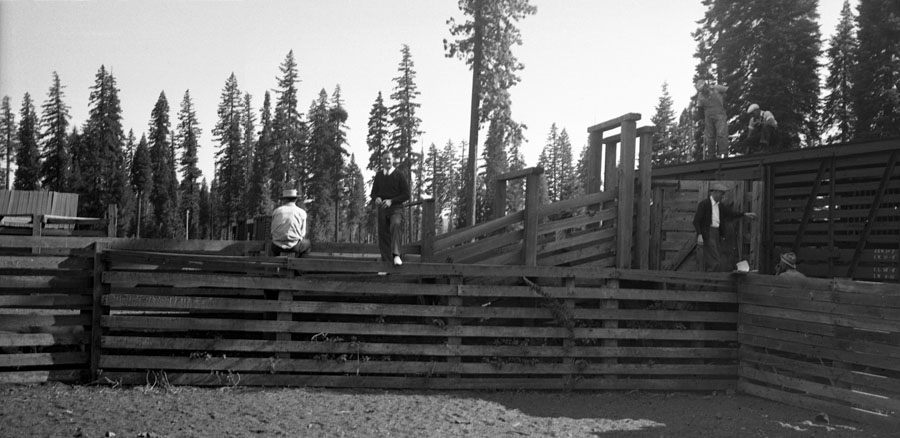 |
|
Loading sheep at Bartle at some point in the late 1930s. T.E. Glover collection.
|
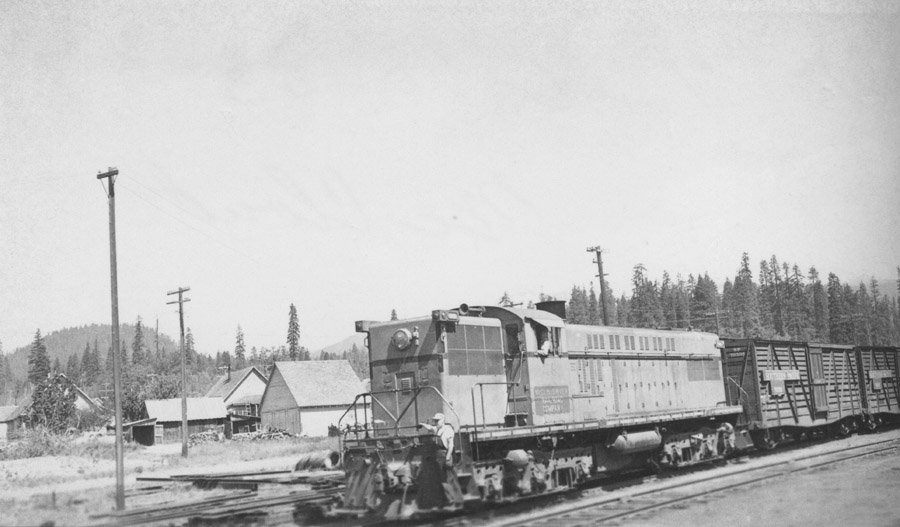 |
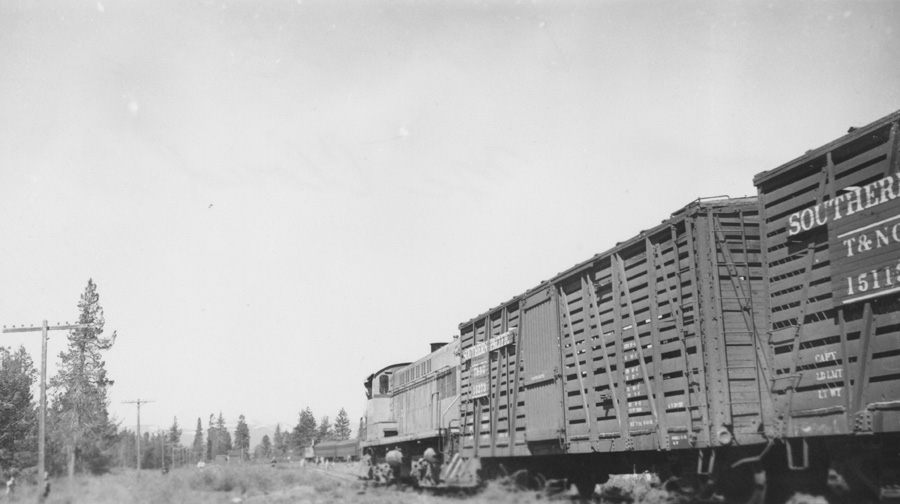 |
|
Two photos of the #29 switching livestock cars in McCloud on 20 June 1963. Ray Piltz photos, Travis Berryman collection.
|
|
|
|
Travis Berryman got these three photographs of the McCloud Railway hauling sugar beets, the first two are loads on the hill west of McCloud while the third depicts empties crossing the Bear Creek fill on the way to Burney. |
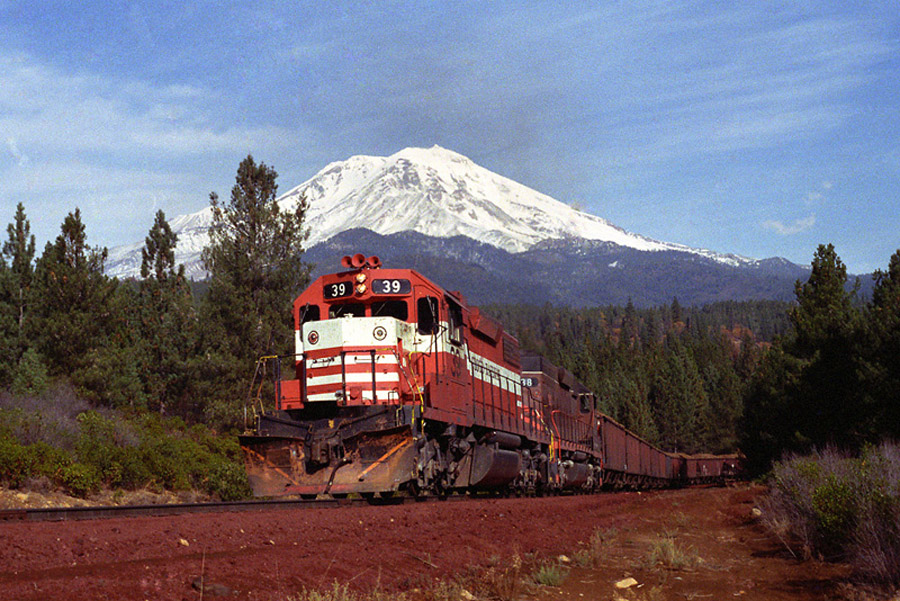 |
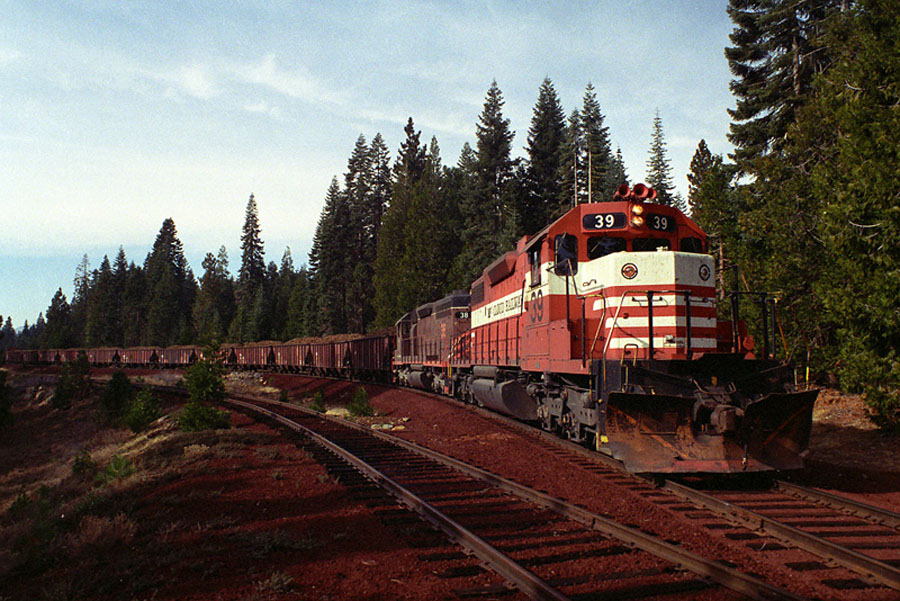 |
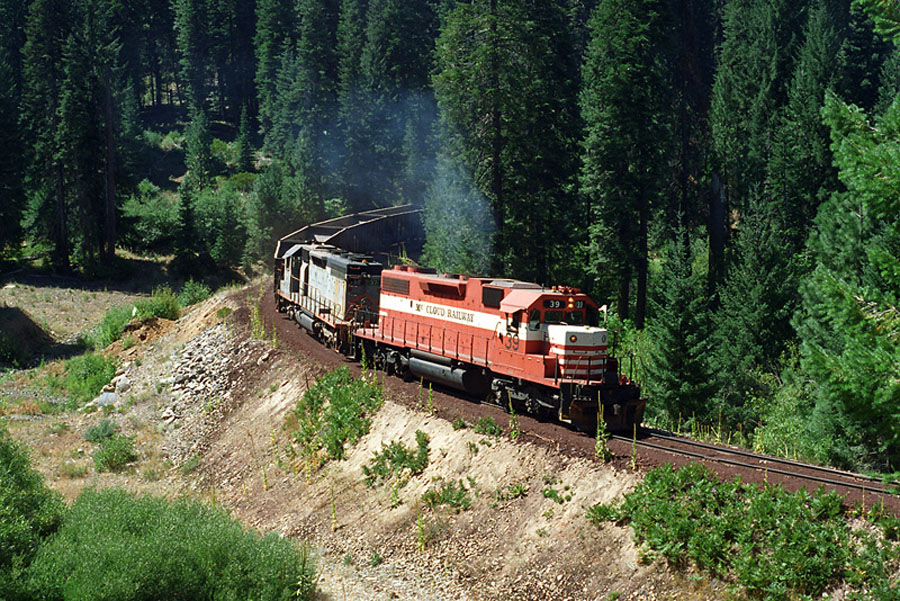 |
|
|
 |
|
The loadout Goose Valley Ranch used as it was in 2006. Trucks would bring the wheat the short distance from the farm to this spot, where it would be dumped through the grates. A conveyor belt, long gone by this point, would lift the wheat to be dumped into the top of the covered hoppers. |
|
|